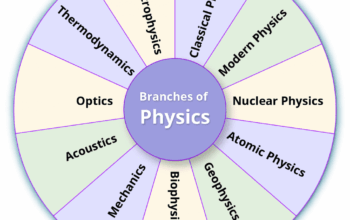Café Society Gets Scientific: Espresso Entropy and Equations
The world of espresso is often perceived through the lens of taste, aroma, and culture, but is it possible to view this beloved beverage through the prism of physics? This article embarks on an audacious journey, investigating the interplay between the artistry of espresso preparation and the scientific principles that govern its extraordinary characteristics. Can we consider the subtle complexities of coffee brewing as an exploration of entropy? Prepare for a delightful challenge as we dissect espresso through the lens of thermodynamic laws and mathematical intricacies—a whimsical yet serious inquiry.
1. Understanding Espresso: A Culinary Alchemy
Espresso is more than just a concentrated shot of coffee; it is the result of meticulous craftsmanship that blends chemistry and physics. The brewing process encapsulates multiple variables, including grind size, water temperature, and pressure. Each element interacts in a dance that can be analyzed scientifically. As the hot water permeates the coffee grounds, it extracts oils, solubles, and carbon dioxide, leading to an equilibrium that, intriguingly, can be interpreted through thermodynamic concepts.
2. The Role of Entropy in the Brewing Process
Entropy, a fundamental notion in thermodynamics, refers to the measure of disorder within a system. At first glance, the meticulous process of espresso brewing appears devoid of disorder. However, upon deeper examination, the very act of brewing introduces a striking contrast between ordered brewing techniques and the inherent chaotic nature of molecular interactions. The heat applied to the coffee grounds initiates a cascade of molecular movement, transitioning the system from a state of low entropy (the coffee grounds) to high entropy as flavors dissolve into the aromatic brew.
This transition raises a playful question: if every cup of espresso symbolizes a fleeting moment of harmony amidst chaos, can we quantify the entropy associated with each brewing method? Herein lies a challenge that extends beyond culinary boundaries, compelling us to adopt a scientific framework to examine the brewing intricacies.
3. Brewing Variables: Quantifying the Unquantifiable
The chemistry underlying espresso is as rich as its flavor profile. Key variables such as water temperature, pressure, and exposure time serve as parameters that can be adjusted to modulate taste. For instance, the ideal brewing temperature typically ranges between 90°C and 96°C. At this optimal range, the solubility of essential flavor compounds reaches parity with ideal extraction rates, thereby crafting a harmonious balance of taste, aroma, and body.
We can express these variables through mathematical equations derived from the principles of thermodynamics. The heat transfer equation, Q = mcΔT, where Q symbolizes heat energy, m denotes mass, c represents the specific heat capacity of water, and ΔT reflects the temperature change, encapsulates a foundational aspect of espresso preparation. By applying this equation in various brewing scenarios, one gains predictive insight into flavor extraction dynamics. Adjusting the variables not only influences the espresso’s flavor but also its entropy state, ultimately suggesting that the craft of espresso brewing is an empirical pursuit rooted in quantitative analysis.
4. Pressure: The Catalyst of Complexity
Pressure is another vital variable in the quest for impeccable espresso. The quintessential espresso machine often operates at a pressure of 9 bar, which is about 130 psi. This intense pressure forces water through the compacted coffee grounds, contributing to the essential crema—the golden froth that forms atop a well-pulled shot, brimming with aromatic compounds and volatile oils. However, the application of pressure is not merely a physical endeavor; it also amplifies the entropy of the brewing system. The relatively ordered structure of the tightly packed coffee grounds becomes chaotic under high pressure, facilitating the release of robust flavors and fragrances.
This interaction invites a critical inquiry: what happens to the entropy of the system when different pressures are employed? A higher pressure may yield a more concentrated flavor, whereas lower pressure may produce a milder extraction. Understanding the thermodynamic implications of pressure settings allows both baristas and coffee aficionados to appreciate the nuances of different brewing techniques and their corresponding flavors.
5. The Chemistry of Flavor Compounds
At the molecular level, the extraction of flavor compounds during the brewing process is governed by their solubility properties and reaction kinetics. The presence of diverse compounds such as caffeine, lipids, and organic acids generates a kaleidoscope of aromas and flavors. The competition between soluble substances introduces a conundrum: maximizing the retrieval of desirable compounds while minimizing the unwarranted extraction of bitter or astringent agents. This balancing act is rife with thermodynamic implications and highlights the interdependence of chemistry and physics within espresso making.
Herein lies the challenge: if one were to mathematically model the interactions of flavor compounds within the espresso, could we predict a model flavor profile based on various brewing parameters? It is an enthralling thought, illuminating the potential for rigorous analysis in a realm often devoted to subjective appreciation.
6. Conclusion: The Future of Espresso Innovation
As we savor each meticulously crafted shot of espresso, let us not dismiss the scientific principles that underpin this beloved beverage. The merging of culinary art and scientific inquiry manifests in an enthralling exploration that bridges creativity and methodology. Whether considering the quantifiable impacts of entropy or the pivotal role of pressure in brewing, the potential for new discoveries in espresso continues to abound. In a world where café society thrives, may we find inspiration to delve deeper into the scientific subtleties that elevate our daily rituals. In the end, the enigmatic relationship between espresso and physics points towards a future where meticulous attention to detail and rigorous scientific inquiry can yield not only a richer cup but also a profound understanding of the world around us.










